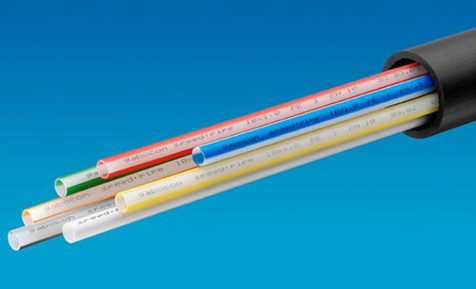empty conduit
Conduits are plastic or metal pipes for power and signal-carrying cables. They are laid in walls, floors, ceilings or in the ground and can accommodate individual wires, cables, broadband cables, antenna cables, UTP or STP cables or even FO cables. Empty conduits serve to protect cables against external influences and damage.
Empty conduits can accommodate several cables, they have a smooth or wavy inner surface, they are frost and corrosion resistant and are made of polypropylene( PP), polyvinyl chloride( PVC) or high density polyethylene (HDPE). Their diameter is determined by the number of cables or optical fibers that the conduit must accommodate. Common outside diameters for power cables range from 13 mm to 63 mm, and those for fiber optics are 50 mm, 63 mm, 110 mm and 125 mm. The outside diameters are given as DN values. For example, DN 50 for a 50-mm empty conduit.
In the case of glass fibers, speed pipes, multiple occupancy pipes are inserted into the empty pipes, or micro pipes are drawn in. The diameters of the empty tubes are dimensioned in such a way that an empty tube can optimally accommodate a certain number of microducts, namely in such a way that there is still a small room for movement in the empty tube.
A fiber optic cable with a maximum outer diameter of 6.3 mm and a maximum of 96 fibers can be pulled intoa 10-mm microduct. Metallic conductors are pulled in using tension wires and a lubricant, while fiber optics are blown in using compressed air. An empty conduit with a diameter of 50 mm can be occupied by a maximum of three FO cables, each of which can consist of 144, 288 or 576 glass fibers.

